Clancy Tucker's Blog, page 38
October 6, 2021
29 November 2021 - JOHN JACOB ASTOR - THE FIRST AMERICAN BILLIONAIRE

JOHN JACOB ASTOR
- THE FIRST AMERICAN
BILLIONAIRE -
G'day folks,
This man was the first multi-millionaire businessman in the United States. At the time of his death he was the richest person in the US with an estate worth some $20 million – about $140 billion in today’s money.
To some, he was one of the original “captains of industry”. To others, he was a “robber baron” who owed his vast fortune in part to illegal opium-dealing.
The son of a butcher, Astor was born in 1763 at the village of Waldorf in Germany. At 17 he made his way to England where his brother George had set up a musical instrument business in London.
Astor spent three years in England, learning the language and honing his business skills. He intended to make his fortune in the United States, which he saw as a new land of opportunity after the War of Independence.
He left England in November 1783, but his ship became stuck in ice at the mouth of Chesapeake Bay, where it was stranded for two months. While kicking his heels on board, Astor is said to have fallen into conversation with a fellow passenger who had gone into business trading furs with Native Americans.
What he heard was music to Astor’s ears and he set aside plans for selling musical instruments, deciding to become a fur trader. For a time he did sell pianos and flutes sent by his brother in England, but with the profits he bought furs.
He soon opened a shop in New York and by the turn of the century he had developed it into the country's leading fur company. It would monopolise the fur business for decades, at a time when beaver hats were considered the height of fashion in America and Europe.
Astor also began exporting furs to China and importing Chinese silk and tea, while also turning his attention to the opium trade. China had outlawed it but Astor knew that despite the illegality, opium was still in popular demand.
Ambitious and ruthless, he purchased 10 tons of Turkish opium in 1816 and sent it into China, trading it for goods – tea, pottery and fabrics. He then resold those goods for a fortune in the United States.
It isn’t clear how much opium Astor sold during his years as a drug smuggler. It has been estimated that he offloaded hundreds of thousands of pounds of opium between 1816 and 1825, when he moved out of the trade.
But his fur empire remained his principal business, at least until 1834 when he decided to sell, believing that the industry was too vulnerable to changes in fashion. The beaver hat, it seems, had had its day.
He turned to other investments, including property, money-lending, insurance, banking, railroads and canals, public securities, and the hotel business. The most important was property and he acquired vast holdings of real estate in New York City and the surrounding area. During the last decade of his life his income from rents alone exceeded $1,250,000.
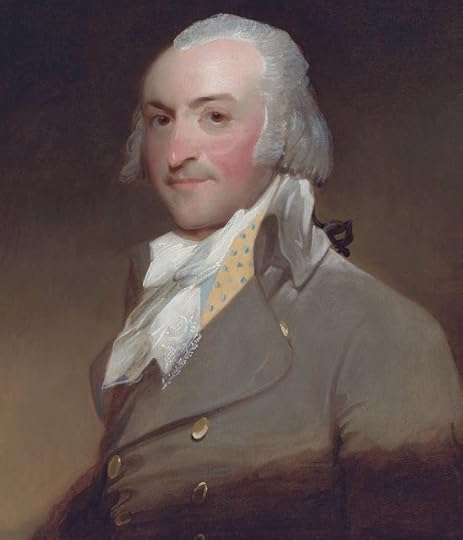
Today, his name is remembered in the real estate market perhaps most famously for the Waldorf-Astoria Hotel.
His great-grandson, John Jacob Astor IV, who died when the Titanic sank (see article, 15 April) built the famous Astoria hotel in 1897. It was considered to be the most luxurious hotel in the world and was located close to the Waldorf Hotel, built by his cousin – and rival – William.
The Astoria was named after the family and the Waldorf after Astor’s native village in Germany. The hotels, which were located at the present site of the Empire State Building, were later combined into the Waldorf-Astoria, currently standing on Park Avenue in New York City.
John Jacob Astor died aged 84 at one of his houses in New York City.
Academic Stephen Schneider of Saint Mary's University, Halifax, Nova Scotia, has written about “robber barons”, whom he describes as “the powerful 19th Century US industrialists and financiers who made fortunes by monopolising huge industries through the formation of trusts, engaging in unethical business practices, exploiting workers, and paying little heed to their customers or competition.”
Astor, he says, was one of them, amassing his fortune through the monopoly held by his American Fur Company during the first 30 years of the 19th century.
“This monopoly,” says Professor Schneider, “was achieved in part by crushing rivals and systematically cheating Native Americans of fur pelts. When his competitors complained to the government, Astor’s agents resorted to violence. With his riches, he routinely paid off politicians to protect his business interests.”
That said, Astor showed a philanthropic streak when he bequeathed $400,000 for the founding of a public library, the Astor Library, in New York City, which was consolidated with others as the New York Public Library in 1895. His descendants took note and became philanthropists as well as capitalists.
But putting any philanthropy in perspective, another academic, author and historian James L. Stokesbury, wrote in 1997: “In his later years, Astor tried to pass himself off as a liberal humanitarian, but the pose was too unnatural, and it never became credible.
“To the end, money was his passion, and to make it his men evicted widows and debauched Native Americans. Though some writers, notably in the late 19th century, regarded him as a great American hero, history has not accepted the verdict.
"Today, in a more complex era, Americans ask more of their heroes than the ability to make money.”

Clancy's comment: I had the most expensive beer ever at the Waldorf-Astoria in New York. Just sayin' ...
I'm ...


26 November 2021 - THE ASSASSINATION OF MAURIZIO GUCCI

THE ASSASSINATION
OF MAURIZIO GUCCI
G'day folks,
Maurizio Gucci, the 46-year-old heir to the Gucci luxury leather goods and fashion dynasty, was shot dead as he arrived for work at his office in Milan in 1995.
Three years later his former wife, Patrizia Reggiani, who is known in Italy as “the Black Widow” or “Lady Gucci”, was jailed after being found guilty of paying a hit-man 300,000 euros to carry out the murder.
Maurizio inherited 50 per cent of the family business after the death of his father in 1983 but spent his money with such reckless abandon that ten years later he was forced to sell his shares to the investment group Investcorp, based in Bahrain.
He married Patrizia, a wealthy Italian socialite in 1973, but he left her in 1985 for a younger woman. The couple divorced in 1991, after which Patrizia was said to be furious about other women that her former husband was dating. Patrizia feared that her daughter’s inheritance would be jeopardised if Maurizio remarried, a situation that became more possible as a procession of women vied for Maurizio’s affections.

Her initial sentence of 29 years was reduced to 26 years on appeal and cut further for good behaviour. She was released after serving 16 years.
Bizarrely, just before her release, Patrizia said in an interview that she wanted to return to the Gucci fold. "I dream of returning to Gucci," she said. "I still feel like a Gucci – in fact, the most Gucci of all. I have the qualifications: for years I went shopping around the world. I came from the world of jewels and it is to that world that I want to return."
Outrageously extravagant, Patrizia used to spend thousands of euros a month just on flowers. She once said: “I would rather weep in a Rolls-Royce than be happy on a bicycle.”

Clancy's comment: Ah, the life of the rich and infamous.
I'm ...


October 4, 2021
19 November 2021 - ANCIENT ROCK CARVINGS FROM NORTH AMERICAN CULTURE

ANCIENT ROCK CARVINGS FROM
NORTH AMERICAN CULTURE
G'day folks,
A slab of sandstone covered with mysterious 1,000-year-old rock carvings from a vanished North American culture exists in Ohio.
Some of the best-preserved rock art in Ohio is scrawled across an otherwise ordinary hunk of rock. The figures, an eclectic blend of straightforward designs and abstract creatures, preserve traces of a vanished Native American culture.
Nearly 40 images, collectively known as the Leo Petroglyph, are etched into the large slab of sandstone. Scanning the chunk of rock reveals familiar subjects like birds, fish, footprints, and stick figure humans. Other more abstract designs, including one that looks like a cartoon man with horns, are scattered within the mix as well.
It’s thought that people from the Fort Ancient culture made the petroglyph, though it’s unclear why or exactly when. The best guess is that people began carving the mysterious designs into the flat sandstone canvas about 1,000 years ago.


The petroglyph was originally found along the edge of a sandstone hillside that loomed above a gorge. The rock was carefully extracted and relocated to its current spot, where it lies protected from the elements beneath a shelter. It was added to the National Register of Historic Places in 1970.


There’s a short nature trail beginning at the shelter, which descends into a small gorge with bedrock overhangs, almost certainly shelter for early humans. It’s well worth it to check out the path.

Clancy's comment: These always fascinate me.
I'm ...


October 2, 2021
24 November 2021 - MASSIVE CUCKOO CLOCK IN WIESBADEN, GERMANY

MASSIVE CUCKOO CLOCK
IN WIESBADEN, GERMANY
G'day folks,
This tremendous timepiece was once the largest cuckoo clock in the world.You don’t have to strain your eyes to check the time on this colossal clock. The clock face, which is surrounded by a charming woodland scene, dominates the front of a store.
In the mid-1940s, Sergeant Fred Stern of the New York Police Department approached his uncle, Emil Kronenberger, with an idea: to build the largest cuckoo clock in the world.


Kronenberger owned a souvenir shop in Kaiser-Friedrich Square in Wiesbaden, Germany, a tourist region known for its spas and home to a large American military presence following the Second World War. Stern convinced his uncle that such an attraction would be appealing to American patrons, both servicemembers and tourists alike.
The two set to work, and it wasn’t long before the clock was erected at the entrance of the shop. Measuring over 15 feet tall and nearly nine feet wide, it easily caught the eye of all who passed by. In the 1950s, the clock was named “World’s Largest Cuckoo Clock” by the Guinness Book of World Records, though it has since lost that title.

Clancy's comment: Stunning workmanship.
I'm ...


23 November 2021 - LUNATIC ASYLUM IN ATHENS, OHIO
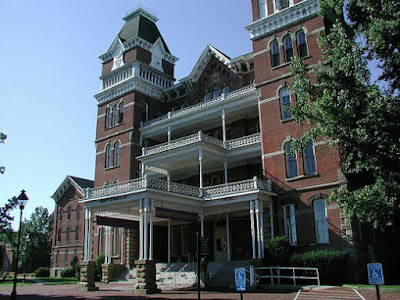
LUNATIC ASYLUM
IN ATHENS, OHIO
G'day folks,
An abandoned asylum has been incorporated into a college campus.Athens Lunatic Asylum opened in 1874 on 141 acres and it was designed for 500 patients. By the 1950s it had expanded to a facility with 78 buildings on 1,000 acres. During its active years tens of thousands of patients were treated with around 1,800 buried in cemetaries on the ground.
At one time it was the largest employer in the state of Ohio. However, it was the patients who worked the grounds. That is, until catatonic drugs became common. Archives on the asylum show that hydrotherapy, electroshock therapy, lobotomies, and psychotropic drugs were all used as treatments.
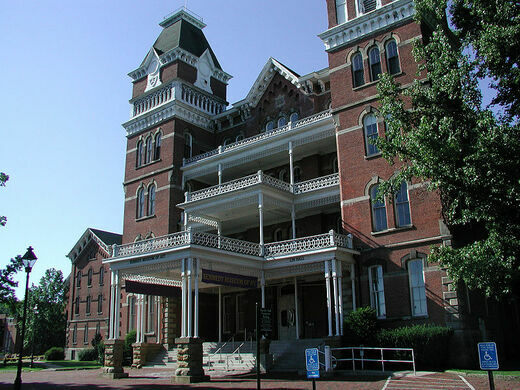
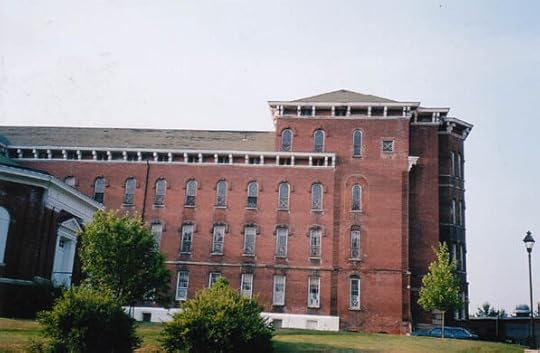
The asylum closed in 1993, and the property was bought by Ohio University. Today as renovations continue the old asylum has several uses, such as a daycare, art museum,art studios, surplus store, Biotech labs, OU Police Department, and education related uses.





The Ridges is also known for its use of the kirkbride plan a unique and distinct asylum plan that used a batwing design and was built on the idea of moral treatment. Kirkbrides featured lots of natural light and airflow. Today the Ridges may be considered the largest and most complete example of a kirkbride still standing.

Clancy's comment: I despise the word, 'Lunatic' but included it here because that was what this place was called. Lest we forget those who spent time here.
I'm ...


October 1, 2021
2 October 2021 - WHO DID INVENT THE TELEPHONE?
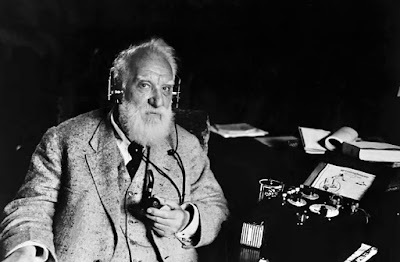
WHO DID INVENT
THE TELEPHONE?
G'day folks,
As everyone knows, Alexander Graham Bell invented the telephone. Or did he? He was certainly granted a patent in 1876 for the device. But over a 20-year period the Bell Telephone Company which he founded faced more than 600 court challenges over the issue.
None succeeded, but things certainly looked grim for Bell in 1887 when the US Government moved to withdraw his patent on the grounds of fraud and misrepresentation. An eventual Supreme Court ruling supported Bell.
It is certainly true that other scientists, including Antonio Meucci and Elisha Gray, were working on similar ideas at the time Bell received his patent. They both lost out partly because instead of applying for a full patent, they simply registered what was known as a patent caveat.
No longer issued, this was a preliminary patent, which meant that the inventor had 90 days to come up with a full detailed application. In that time anyone coming forward with the same or similar invention would have to give way. But the patent caveat had to be renewed annually.
Meucci, an immigrant from Cuba, worked in New York on an electronic communications device that linked various rooms and floors of his house. He couldn’t afford a full patent application so he filed a cheaper patent caveat. But by 1874 he was so broke that he could not afford to renew the caveat.
Elisha Gray, who grew up on a farm in Ohio, studied electricity at college. He received his first patent – for an improved telegraph relay – in 1867 and went on to secure many patents for his inventions.
A patent caveat for a telephone device that he had been working on was filed on February 14, 1876. It was called “Transmitting Vocal Sounds Telegraphically.” Unfortunately for Gray, Bell’s patent application had been filed a few hours earlier. Bell’s was the fifth entry of the day while Gray’s was 39th.
Accordingly, on March 7 Bell was awarded the first patent for a telephone. It came after years of hard work.
Born in Edinburgh in 1847, Bell’s father was a professor of elocution. The boy began inventing things at an early age and at 12 came up with a device of great interest to the farming community – it quickly removed husks from wheat grain.
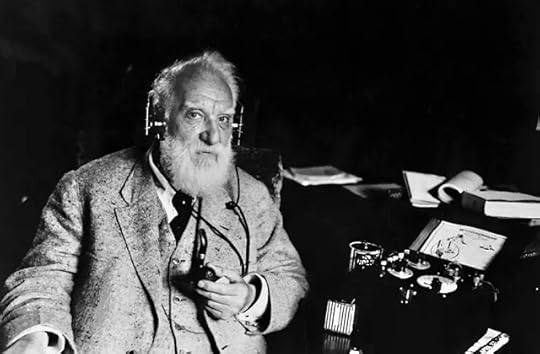
The Bell family moved to Canada in 1870 and to the United States the following year. Based in Boston, Massachusetts, Bell went on to establish speech therapy practices that helped deaf children to speak. His work also benefited his mother who was deaf despite being an accomplished pianist.
In the 1870s Bell began working on a way to send voice signals over a telegraph line – a system known as the "harmonic telegraph”. Working with him was Thomas Watson, a young electrician whose services he had enlisted.
Mary Bellis, the film director who specialised in writing about inventors and inventions, described their success: “On June 2, 1875, while experimenting with his harmonic telegraph, Bell and Watson discovered that sound could be transmitted over a wire.
“It was a completely accidental discovery. Watson was trying to loosen a reed that had been wound around a transmitter when he plucked it by accident. The vibration produced by that gesture travelled along the wire into a second device in the other room where Bell was working.
“The ‘twang’ Bell heard was all the inspiration that he and Watson needed to accelerate their work. They continued to work into the next year.
“Bell recounted the critical moment in his journal: I then shouted into M [the mouthpiece] the following sentence: 'Mr. Watson, come here – I want to see you.' To my delight, he came and declared that he had heard and understood what I said.”
Like Elisha Gray, Antonio Meucci claimed Bell had stolen his ideas. But author Tom Farley wrote: “[For that] to be true, Bell must have falsified every notebook and letter he wrote about coming to his conclusions. That is, it is not enough to steal, you must provide a false story about how you came along on the path to discovery.
“You must falsify each step toward invention. Nothing in Bell's writing, character, or his life suggest he did so. Indeed, in the more than 600 lawsuits which involved him, no one else was credited for inventing the telephone.”
Bell worked on hundreds of projects throughout his life and received many patents for his inventions. They included the metal detector, which he came up with to locate the bullet inside the body of assassinated President James A. Garfield.
Ironically, Alexander Graham Bell, who died aged 75 from diabetes complications, always refused to have a telephone in his study, fearing it would distract him from his work.

Clancy's comment: Wow, 600 court challenges, and now every man and his dog and cat have a mobile / cell phone.
I'm ...


September 28, 2021
22 November 2021 - THE RED BARON'S GRAVE

THE RED BARON'S
GRAVE
G'day folks,
Baron Manfred von Richthofen—known simply as the ‘Red Baron’—was a famed fighter pilot in the German Air Force during World War I.
Credited with 80 air combat victories, the Red Baron met his demise when he was shot by a soldier in April 1918. It is surmised that Gunner W. J. “Snowy” Evans—a soldier with the Royal Australian Artillery— is likely the one to have killed the famed pilot.


Six pilots of a similar rank served as pallbearers at his first funeral. He was later moved to a cemetery in Berlin. There, a huge monument was placed on his grave by the Nazi government. After the war, it fell on the Soviet side of the line where the headstone and memorial were shot numerous times as people fled to West Berlin so in the early 1970s the family moved the Baron one last time to the family plot in Wiesbaden. Each year there is a memorial service around the anniversary of when he was shot down.

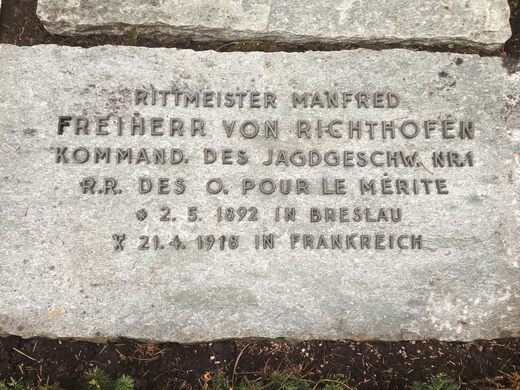


Clancy's comment: He had some great victories, but all wars suck.
I'm ...


18 November 2021 - THE TISCH FAMILY ZOO IN JERUSALEM, ISRAEL

THE TISCH FAMILY ZOO
IN JERUSALEM, ISRAEL
G'day folks,
Biblical beasts and endangered animal preservation come together in this Israeli zoo.While the current Tisch Family Zoological Park has been providing visitors with a glimpse of the creatures of the Bible since 1993, its roots began decades earlier.


The large zoological center now known as the Tisch Family Zoological Park or simply the Jerusalem Biblical Zoo by the locals, originally began as the small passion project of a Jewish scholar who wanted to help people experience the Bible as reality as opposed to simply in the abstract.
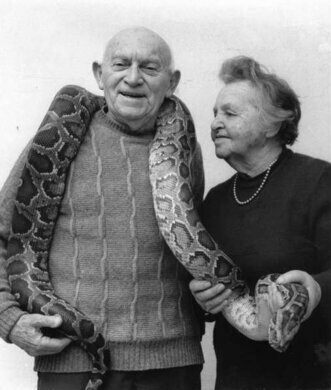
Aharon Shulov was a professor of zoology Jerusalem’s Hebrew University when he started his original children’s zoo in 1940. The small collection of animals were all creatures that had been named in the Bible, displayed in a public street. However due to complaints from neighbors, Shulov’s collection had to be moved to a new location. Thus began a series of moves for the collection that lasted until the early 90’s when the expanding menagerie landed in its current home in Jerusalem.
Today the 62 acre site continues Shulov’s dream to bring the animals of the Bible to the public as well as a new focus on endangered species. The park contains over 140 different species across its two main sections, the Biblical and the Endangered. Horses, monkeys, lions, exotic birds, frogs, snakes, fish, and countless other beasts are on display, giving both a religious and conservationist viewpoint to the exhibits. Species that are extinct in Israel are even bred in captivity to help repopulate their numbers.

Clancy's comment: A wonderful effort to preserve creatures. They say a zoo is a wonderful place for animals to observe humans.
I'm ...


September 27, 2021
16 November 2021 - PROFOUND COMMENTS FROM HARPER LEE
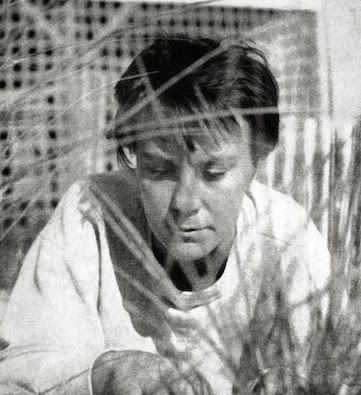
PROFOUND COMMENTS
FROM HARPER LEE
G'day folks,
Nelle Harper Lee was born on April 28, 1926, in Monroeville, Alabama. Her novel To Kill a Mockingbird, which was published in 1960, turned Lee into a literary celebrity and won her a Pulitzer Prize. Despite the book’s huge success, Harper Lee never published another novel in her lifetime. In 2015, long after the public had given up on seeing anything more from her, a manuscript which she had submitted in 1957, before To Kill A Mockingbird, and was thought to be lost had resurfaced mysteriously. It was published a year later under the title Go Set a Watchman. Many years after Lee became a household name, she would say straightforwardly that the success of her first novel overwhelmed her, making it impossible for her to write a follow-up book.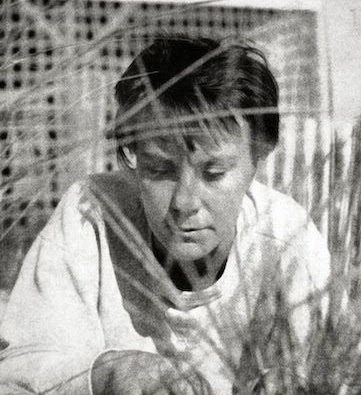
And To Kill A Mockingbird indeed was, and still is, a phenomenon. Its enduring success was unprecedented. Only a week after its publication, the novel jumped to the top of the best-seller list and remained there for 88 weeks. It was translated into some 40 languages and sold more than 40 million copies worldwide. Its appeal, in part, is due to the universal themes it grapples with, empathy, identity, and compassion. Harper Lee died in 2016, in her hometown of Monroeville, where she spent the latter part of her life. Here are some of the most remarkable and enduring quotes she left us.











 Clancy's comment: Simple but wise words.
Clancy's comment: Simple but wise words.I'm ...


September 26, 2021
15 November 2021 - PENCIL SHARPENER MUSEUM IN OHIO

PENCIL SHARPENER
MUSEUM IN OHIO
G'day folks,
People collect all sorts of things, but pencil sharpeners? Yes, it took more than 20 years and a sharp eye for one man to assemble this quirky collection.
Collecting pencil sharpeners and assembling them into a museum dedicated to pencil sharpeners is a kind of eccentric thing to do. Step inside the Paul A. Johnson Pencil Sharpener Museum in Logan, Ohio and it somehow seems perfectly admirable.


The Pencil Sharpener Museum is the result of over 20 years of collecting by Ohio local, Rev. Paul A. Johnson. His wife gave him a couple of car-shaped sharpeners in the late 1980s, and his zeal for collecting was born. The sharpeners lived in a pre-fab shed in Johnson’s backyard, growing over time to over 3400 at the time he passed away in 2010. His family was holding onto them when salvation for the whole collection – and the shed – came calling in 2011. It was the Hocking Hills Welcome Center, happy to take on the job of collection custodian, and everything was moved over to their site in South Logan.


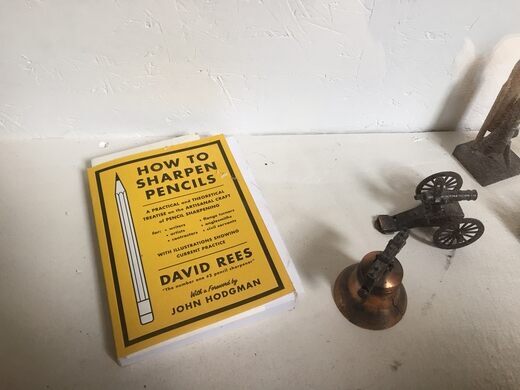
Just like any museum, the collection has been meticulously cataloged and preserved in protective cases. There are sharpening cars, toys, Garfields, Mickeys, Tweetybirds, tractors, airplanes, trains, U.S. presidents, panda bears. There are old ones and new ones, and some shelf-mounted classics you generally only see at the library. Try to be sharp on your puns though—the staff has heard them all.

Clancy's comment: There ya go, folks. Who'd have ever guessed?
I'm ...





